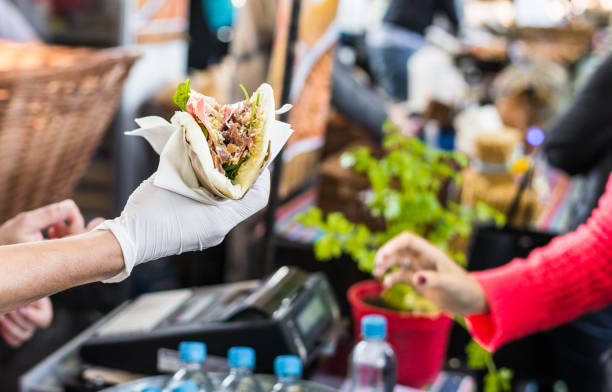Exploring the World’s Best Street Food Markets: A Culinary Adventure
Street food markets are an essential part of many cultures around the world, offering a unique and flavorful experience for adventurous food lovers. These bustling markets serve as a window into a destination’s culinary soul, where you can taste authentic local dishes, interact with vendors, and explore the rich traditions behind the food. Whether you’re craving spicy curries, savory skewers, or sweet treats, the world’s street food markets promise a delicious adventure. Let’s take a culinary journey through some of the best street food markets around the globe and explore the must-try dishes, cultural experiences, and tips for eating safely.
1. Jinli Ancient Street Market, Chengdu, China
Why it’s special: Chengdu is the capital of Sichuan Province, known for its bold and spicy flavors, and Jinli Ancient Street Market offers an immersive experience in this world-famous culinary hub. With its ancient architecture, buzzing atmosphere, and array of street vendors, the market is the perfect place to sample Sichuan’s signature dishes.
Must-Try Dishes:
- Sichuan Hotpot: A fiery, flavorful broth served with a variety of meats, vegetables, and tofu that you cook yourself at the table.
- Chuan Chuan: Skewered meats and vegetables grilled over an open flame, often seasoned with a spicy Sichuan peppercorn mix.
- Dan Dan Noodles: Spicy, savory noodles topped with chili oil, ground pork, and peanuts. Cultural Experience: Chengdu is the birthplace of the famous Sichuan peppercorn, and a visit to the market gives you a firsthand experience of how this unique spice is used in local dishes. Be prepared for the numbing, tingling sensation that defines the flavors of Sichuan cuisine. Eating Tips: While the food here is incredible, it’s also quite spicy. If you’re not used to high levels of heat, ask for a milder version of dishes or take it slow with the chili sauce.
2. Bangkok’s Chatuchak Market, Thailand
Why it’s special: Chatuchak Market, also known as the JJ Market, is a sprawling weekend market in Bangkok, offering everything from clothing to antiques. But its street food section is what draws culinary tourists from all over the world. Thai street food is known for its vibrant flavors—sweet, sour, salty, and spicy—often with fresh herbs and zesty lime.
Must-Try Dishes:
- Pad Thai: Stir-fried noodles with shrimp, peanuts, bean sprouts, and lime.
- Som Tum (Papaya Salad): A zesty, spicy salad made with shredded green papaya, chili, fish sauce, and peanuts.
- Mango Sticky Rice: A traditional Thai dessert made with ripe mango, sticky rice, and coconut milk. Cultural Experience: Chatuchak is an essential stop for food lovers wanting to sample authentic Thai street food. The market’s street food vendors offer a cross-section of Thailand’s regional flavors, from spicy northern curries to southern seafood dishes. Eating Tips: Thailand’s street food is generally safe, but it’s important to eat food that’s freshly prepared and served hot. Drink bottled water and be cautious with street fruits that might be washed in tap water.
3. Mercado de la Merced, Mexico City, Mexico
Why it’s special: Mexico City’s Mercado de la Merced is one of the largest and most famous food markets in the city. It’s a colorful, chaotic market offering everything from fresh produce to tacos, tamales, and tortas. This market is a must-visit for anyone who loves Mexican street food and wants to experience the heart of the country’s culinary culture.
Must-Try Dishes:
- Tacos al Pastor: Tender pork marinated with pineapple and spices, cooked on a vertical rotisserie and served in soft corn tortillas.
- Tamales: Steamed masa filled with various ingredients like pork, chicken, or cheese.
- Quesadillas: Fried tortillas filled with cheese, mushrooms, or squash blossoms. Cultural Experience: Mercado de la Merced is not just about food; it’s a cultural hub where you can interact with locals, watch them prepare traditional dishes, and understand the importance of food in Mexican life. Don’t miss the chance to sample local salsas or enjoy a cold glass of fresh agua fresca. Eating Tips: Mexico City street food is generally safe, but it’s a good idea to eat at busy stalls where the turnover is high, ensuring the food is fresh. Avoid drinking tap water and make sure your fruits and vegetables have been peeled.
4. La Boqueria, Barcelona, Spain
Why it’s special: Located on the famous La Rambla street, La Boqueria Market is one of Europe’s oldest and most vibrant food markets. Known for its abundance of fresh produce, seafood, meats, and prepared foods, La Boqueria is a foodie’s paradise. The market’s blend of Spanish and Catalan flavors makes it a must-visit for anyone exploring Barcelona’s street food scene.
Must-Try Dishes:
- Jamón Ibérico: Spanish cured ham, often served on thin slices of baguette or as part of a charcuterie board.
- Bocadillos: Spanish sandwiches filled with a variety of meats, cheeses, and local ingredients.
- Churros con Chocolate: Fried dough pastries served with rich, thick chocolate for dipping. Cultural Experience: La Boqueria isn’t just about food—it’s a vibrant part of Barcelona’s cultural scene. Many local Catalan dishes are featured here, and it’s a great place to learn about the regional ingredients that define Spanish cuisine. Try some local olives or a glass of freshly squeezed fruit juice while wandering the aisles. Eating Tips: Barcelona’s street food is quite safe, but the market can get crowded, so it’s best to visit during non-peak hours (early morning or later in the afternoon). Be cautious with raw seafood if you’re not accustomed to it.
5. Istanbul’s Eminönü Spice Market, Turkey
Why it’s special: Istanbul’s Eminönü Spice Market (Mısır Çarşısı) is a feast for the senses, with colorful displays of spices, dried fruits, and herbs. While it’s known for its rich selection of spices, it also offers some of the best Turkish street food in the city, from savory to sweet treats. The blend of Middle Eastern, Turkish, and Balkan influences creates a unique street food scene.
Must-Try Dishes:
- Simit: A Turkish sesame-covered bread ring, often eaten as a breakfast snack with tea.
- Kebabs: Grilled meat, often served in a pita or flatbread, drizzled with yogurt and tomato sauce.
- Baklava: Sweet pastry made with layers of phyllo dough, filled with chopped nuts and sweetened with syrup or honey. Cultural Experience: The Spice Market is one of the oldest in Istanbul, and walking through it feels like stepping back in time. As you sample the food, you’ll also be able to see local craftsmen preparing spices and sweets in traditional ways. Eating Tips: Turkish street food is generally very safe. However, the busy atmosphere can make it difficult to find seating, so be prepared to stand or find a quiet corner. Drink bottled water and be cautious with dairy if you have a sensitive stomach.
6. Kuala Lumpur’s Jalan Alor, Malaysia
Why it’s special: Jalan Alor, located in the heart of Kuala Lumpur, is one of the city’s most famous street food hubs. The street comes alive at night with vendors grilling skewers, steaming dumplings, and frying up noodles. The variety of street food available here, heavily influenced by Malay, Chinese, and Indian cuisines, makes it an exciting spot for any food lover.
Must-Try Dishes:
- Char Kway Teow: Stir-fried flat rice noodles with prawns, egg, and bean sprouts.
- Satay: Grilled skewers of marinated meat served with a rich peanut sauce.
- Cendol: A refreshing dessert made with shaved ice, coconut milk, and green jelly noodles. Cultural Experience: Jalan Alor is not only about food but also about the vibrant street life of Kuala Lumpur. As you eat, you’ll experience the hustle and bustle of the market, with people of all backgrounds coming together to enjoy a delicious meal. Eating Tips: Malaysia’s street food is typically safe, but always check that the food is freshly cooked and served hot. Be mindful of how spicy the dishes may be, and drink bottled water to avoid any stomach issues.
Final Thoughts
Street food markets around the world offer a unique and unforgettable way to experience a culture. Whether you’re indulging in a spicy bowl of noodles in Chengdu, savoring fresh seafood in Istanbul, or sampling sweet mango sticky rice in Bangkok, these markets provide a delicious window into the heart of local life. Remember to stay adventurous, but also practice good food safety habits, and you’ll be sure to have a satisfying culinary journey that will leave you craving more.


